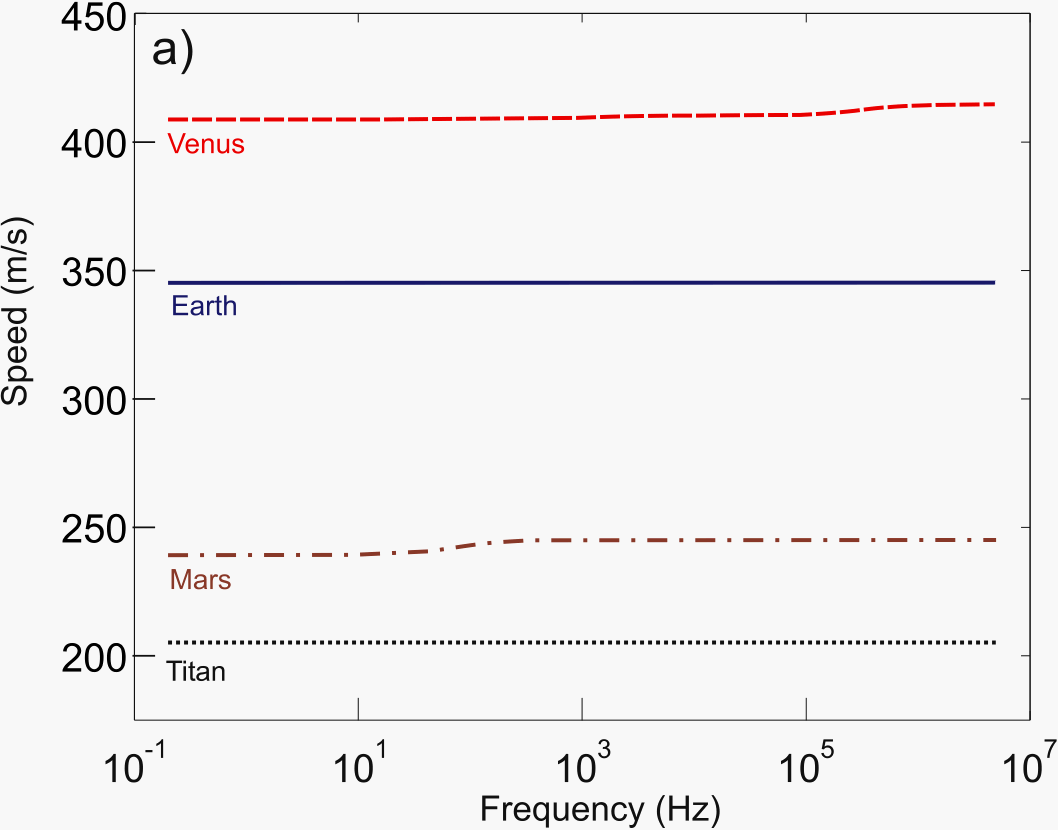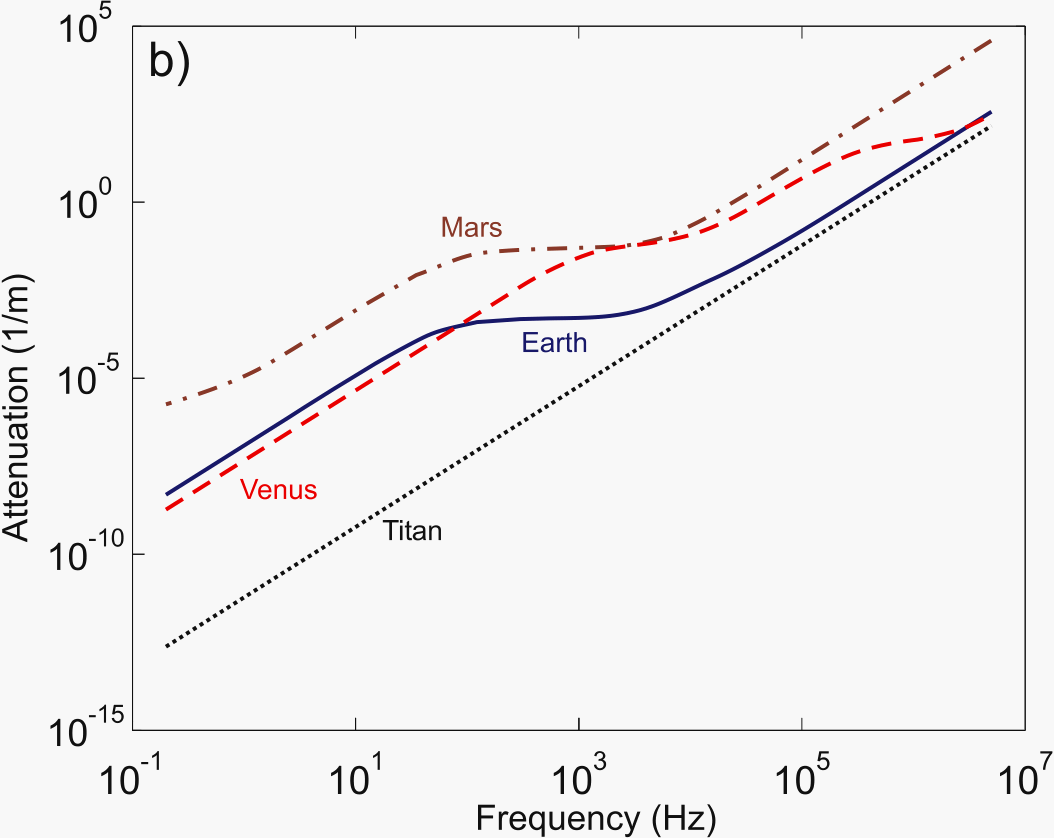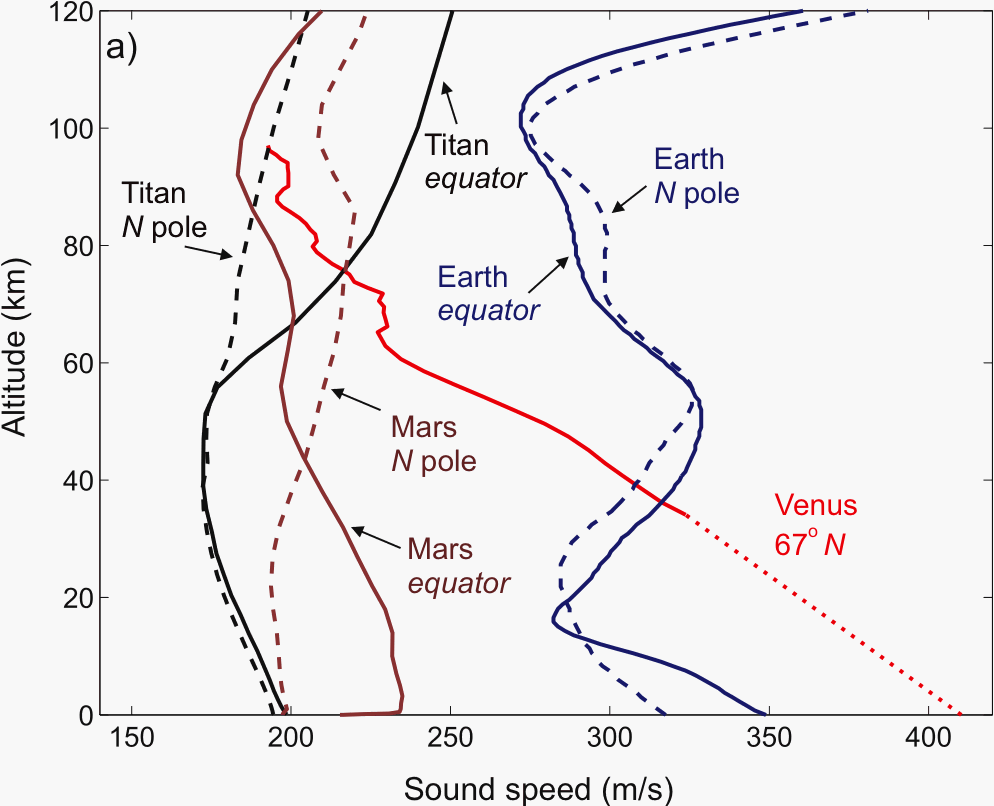Andi Petculescu- andipet@gmail.com
Department of Physics, University of Louisiana, PO Box 44210
Lafayette, LA, 70504
Richard M. Lueptow
Department of Mechanical Engineering, Northwestern University
Evanston, IL 60208
Popular version of paper 3aPAb5
Presented Wednesday morning, June 6, 2007
153rd ASA Meeting, Salt Lake City, UT
In the 1980s, two Soviet Venera spacecraft carried microphones in the hope of detecting thunder on Venus. The acoustic data was inconclusive, some of it most probably being generated by turbulent flow around the lander. It wasn't until the late 1990s that another attempt to launch a microphone on a planetary probe was made, on board the unfortunate Mars Polar Lander, lost during descent in September 1999. On January 14, 2004, as part of the Cassini-Huygens mission to Saturn, the Huygens lander made a historical splash-down on Titan, during which it broadcast the first sounds of an alien world in over two decades. The probe carried microphones for recording ambient sounds and potential lightning events, as well as active acoustic sensors for measuring sound speed, altitude, wind speed, and the topography of the landing zone.
The atmosphere of a planet is a complex physical system in perpetual interaction with solar radiation and the planets surface. The dynamics, structure, and composition of planetary atmospheres hold clues to the planets energy balance. Earth is habitable because of a very delicate equilibrium between its inner structure, its oceans, its favorable orbit around the Sun, and its atmosphere. Acoustic waves propagate by coupling directly to fluid media which is why they are very sensitive to any perturbations of the medium. Passive acoustic sensors (e.g. microphones) can be used to study thunder waveforms (for instance, lightning occurs on Mars, Venus, Titan, and Earth, but their generating mechanisms may be different), acoustic signatures of bolide entry and impact, and the aeroacoustic sound of tornadoes and dust devils. Active sensors, incorporating a transmitter-receiver pair, can completely quantify turbulence, measure wind speeds, and help determine the chemical composition of atmospheres.
The successes of recent planetary exploration missions herald a new era in the exploration of our solar system. As the data relayed back to Earth by Huygens has shown, acoustics can play an ever-increasing role in gathering information about alien environments.
We have developed a physical model that is able to predict the sound speed and attenuation in polyatomic gas mixtures over a wide frequency range.
The figures below show the frequency-dependent sound propagation properties at the surfaces of Titan, Venus, Mars, and Earth.


Using available data for the vertical atmospheric profiles of temperature, density, and pressure, we can model acoustic propagation at any altitude for Titan, Mars, Venus, and Earth. The vertical sound speed and attenuation profiles at 15 kHz − the frequency used in Huygens active sensors − for the four planets are shown below.


Divertimento: Atmosphere-Filtered Audio Samples
As can be seen from the attenuation vs. frequency plots, the four planetary environments act as acoustic filters with different characteristics. For instance, an audio sample broadcast in the four atmospheres will be "heard" differently. This is shown in this audio file. The file repeats a well-known soundbite three times, spaced a few seconds apart. The three parts correspond to passing the soundbite through 1) the "Earth filter," 2) the "Titan filter," and 3) the "Venus filter." The "Mars filter" is much too attenuative due to the tenuous